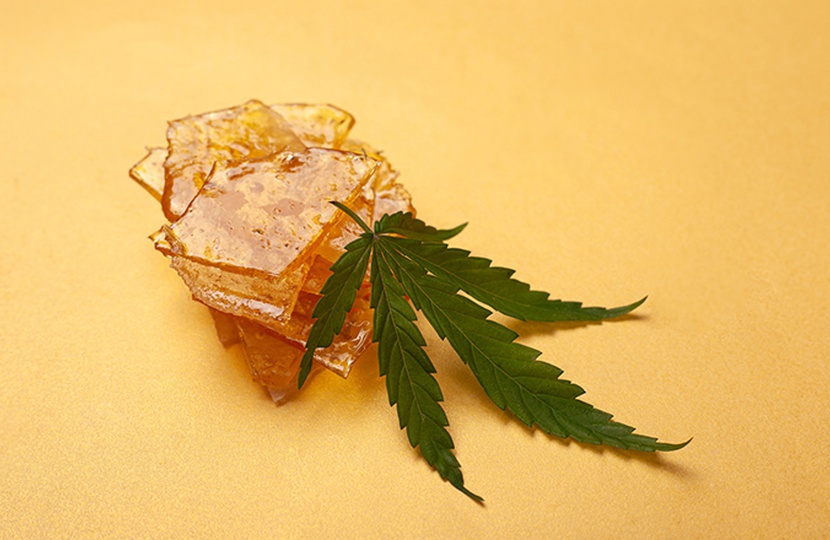Footballer Cam Newton may have popularized the “dab” movement as a celebratory touchdown gesture that involves bowing your head and pointing your arms diagonally upward in the opposite direction. But in cannabis culture, to dab is something completely different. Dabbing to consume cannabis concentrates by heating them on a “nail” (a blisteringly hot surface) and then inhaling the vapor via a dab rig, which is a specialized, bong-esque device used exclusively for this process. But to understand this method and to perform it correctly, we first need to understand what cannabis concentrates are.
What is Dabbing?
Footballer Cam Newton may have popularized the “dab” movement as a celebratory touchdown gesture that involves bowing your head and pointing your arms diagonally upward in the opposite direction. But in cannabis culture, to dab is something completely different. Dabbing to consume cannabis concentrates by heating them on a “nail” (a blisteringly hot surface) and then inhaling the vapor via a dab rig, which is a specialized, bong-esque device used exclusively for this process. But to understand this method and to perform it correctly, we first need to understand what cannabis concentrates are.
What Are Cannabis Concentrates?
It’s been said that cannabis concentrates are the purest, cleanest method of consuming the plant, which produces the most intense effect. Concentrates – sometimes called extracts – are the isolated THC and/or CBD compounds of the plant that are left over when the excess plant material is stripped away. Think about how when you squeeze the juice from an orange or lemon, leaving the peel and the fruit material behind. Extracting concentrated THC or CBD is the same idea, despite being a completely different series of processes. These extracts can be used to make vape cartridges, to infuse edibles, or into dabbable concentrates.
Concentrates can be a little intimidating if you’re not familiar. Not only are they incredibly potent (over 90% THC in some cases, whereas flower is usually around 15% to 30%), but they come in odd consistencies. Everyone is familiar with the various methods of consuming flower, which usually consists of lighting it on fire and inhaling the smoke. But what do you do with these odd, yellow substances? More on that in part 2.
What are the Different Types of Cannabis Concentrates
Sugar? Shatter? Budder? Batter? Sounds like a Dr. Suess book, huh? The consistency of the concentrate will depend on the process that was used for the THC or CBD to be extracted from the cannabis plant. There are many different processes – usually involving solvents (or a lack thereof) – used in production labs across the country. Here are some of the most common concentrates you’ll see in dispensaries.
Shatter – Shatter looks a bit like a Jolly Rancher piece of candy; it’s transparent, stiff, brittle, and has a glossy finish. Shatter has been known to produce THC percentages as high as 99%. On the flipside, its brittle texture can make it difficult to parse out into the desired dosage, so be careful not to overdo it.
Wax – Wax is the all-encompassing term for whipped concentrates that have had the residual solvents evaporated. This includes badder, budder, crumble, etc. The finished product’s consistency will depend on the intensity of the whipping process. Badder looks a bit like cake batter, budder looks a bit like butter, crumble looks like a cookie, and so on. Waxes are easier to manipulate than shatter, as their textures are more malleable, making the dabbing process less of a headache.
Rosin / Live Resin – Under pressure? Unlike butane extraction methods, rosins / live resins are made from intense pressure via a hydraulic press, which expunges the cannabis oil from the dried flower. This amazing process is sometimes preferred because there are no solvents left hanging around in the final product, which is a gooey, gluey texture that is easy to dose and dab.
Sugar – Sugar, how’d you get so fly? Cannabis sugar doesn’t look exactly like the white granular stuff you put on top of your ramen (What? Don’t judge). It looks more like some golden honey if you decided to dump in a spoonful of granulated white goodness and mix them together. Sometimes when concentrates aren’t stored properly, they tend to become “sugared” and then are sold at a discount at dispensaries. Many love sugars, but their loose, oil-like consistency can be a challenge to properly dose.
Beach Sand – Beach sand is a newer addition to the cannabis concentrates market. As its name suggests, Beach Sand is coarse and crystalline, so Anakin would hate it. But those that love it often use it as a topping for flower or other concentrates. It can also be used singularly with an e-nail in case you don’t want to overdo it.
For more information, visit Bloc Dispensary [in Utah, Bloc Pharmacy]
Continue to Part 2: How to Dab Concentrates

